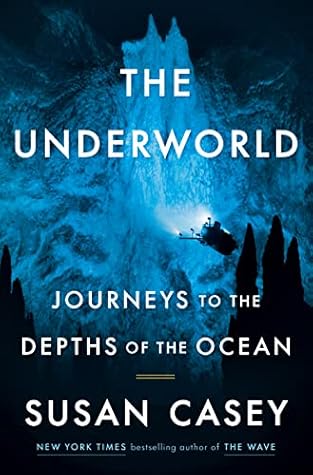More on this book
Community
Kindle Notes & Highlights
by
Susan Casey
Read between
December 16 - December 19, 2024
In this book, I have defined the deeper layers as the twilight zone (six hundred to thirty-three hundred feet), the midnight zone (thirty-three hundred to ten thousand feet), the abyssal zone (ten thousand to twenty thousand feet), and the hadal zone (twenty thousand to thirty-six thousand feet).
The science of measuring the seabed terrain is known as bathymetry—the submarine version of topography.
For every dollar the National Oceanic and Atmospheric Administration spends on ocean exploration and research, NASA gets a hundred and fifty.
Darwin disliked maritime life for other reasons, too. He complained of “the want of room, of seclusions, of rest; the jading feeling of constant hurry; the privation of small luxuries, the loss of domestic society and even of music…” The ocean, he concluded, was “a tedious waste.”
If an earthquake exceeds magnitude 8.5, you can be sure that it sprung from a subduction zone.
You might think it’s impossible (or at least off-puttingly hard) for a small band of criminals to dismantle a sunken World War II battleship, raise the pieces hundreds of feet from the seabed, and cart the whole thing off to sell for scrap metal. You would be wrong. Between 2006 and 2016, in the Java Sea alone, three British warships, three Dutch warships, an Australian warship, and an American submarine had been plucked from the bottom.
To get a sense of how much deep-sea action goes on in the far north, consider the Denmark Strait Cataract, located between Greenland and Iceland. It’s the planet’s tallest, mightiest waterfall, 11,500 feet high and a hundred miles wide, pumping five million cubic meters of water per second—and it lies two thousand feet beneath the ocean’s surface.
No one knows exactly how many fish live in the twilight zone—researchers keep revising their estimates upward—but we do know that it contains more fish biomass than all the other regions of the ocean combined. In particular, it teems with a toothy, glittery predator called the bristlemouth. If a lone bristlemouth passed by—they wriggle, rather than swim—you would likely miss it, because it’s half the size of a crayon. In fact, aside from marine scientists, few people have ever seen one, or have any idea what it looks like (think barracuda in minnow form), or even know that it exists, which is
...more
Earth’s biosphere is 95 percent deep ocean, and that ocean is four billion years old.


